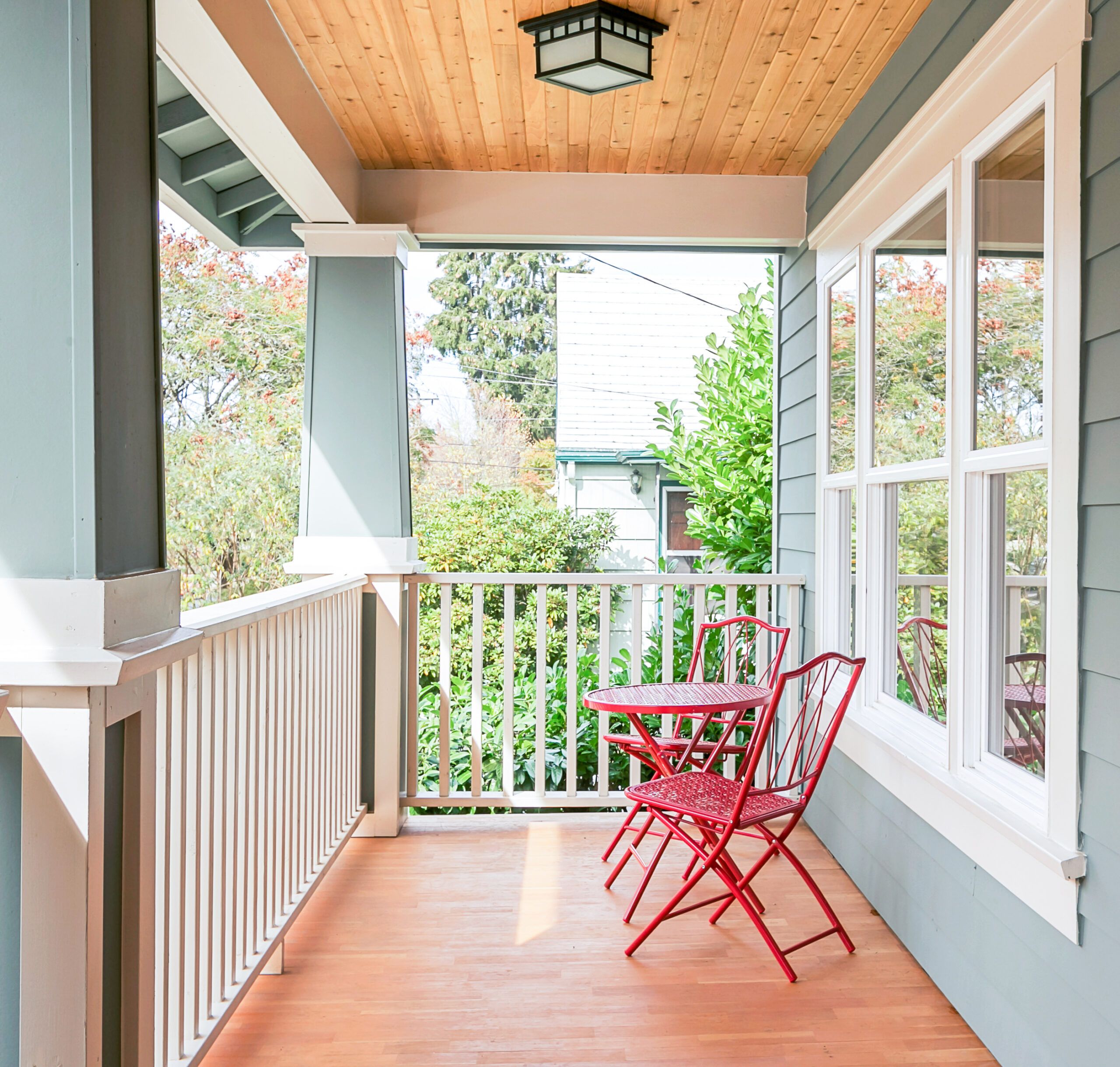Spring is the perfect time to refresh and protect outdoor woodwork from winter’s damage and applying exterior stain is an excellent way to do so. The beauty of stain is that it’s easy to apply and resistant to peeling. It also safeguards wood surfaces while enhancing their natural beauty and unlike paint, which forms an opaque film, stain penetrates the wood, highlighting its texture and grain.
Exterior stains can be clear or colored, and each option offers different levels of protection. This guide will help you navigate the world of exterior stains, understand their components, and choose the right product for your project.
Renew and Refinish
Selecting the right stain for your project will help you achieve the level of protection and look you want. Factors to consider are the type of wood you’re working with and its condition. Exterior stains not only protect wood from moisture and UV damage but also enhance its natural beauty. With proper application and maintenance, a quality exterior stain can protect your outdoor wood surfaces for years.
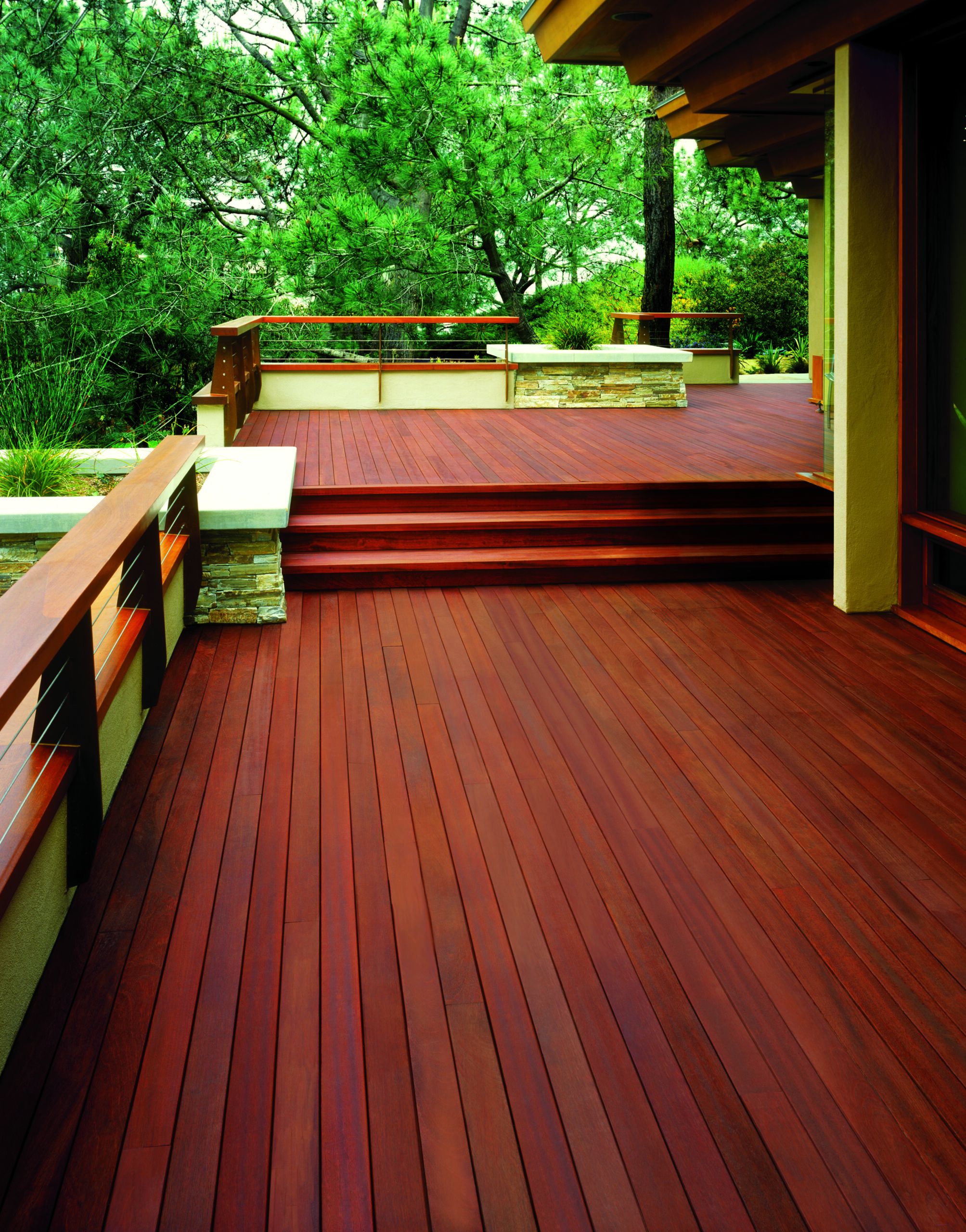
Shown: A knock-out deck starts with great wood — in this case, clear redwood protected with a burgundy-tinted penetrating stain. Behr Premium Semi-Transparent Weatherproofing Wood Stain; behr.com
What’s In a Stain?
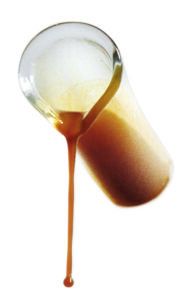
Exterior stains typically contain the following four components:
- Resins and oils: Carry pigments and additives into the wood fibers and shield them from moisture
- Pigments: Add color to the wood and protect it from harmful UV rays
- Additives: Improve the stain’s performance and make it easier to apply
- Solvents: Thin the oils and resins, allowing for better penetration into the wood
Understanding these components can help you choose the right stain for your specific needs. For example, stains with higher pigment content offer more UV protection, while those with more resins provide better water resistance.
Vitals
When selecting an exterior stain, consider the following factors:
- Base: Oil-based, water-based, and hybrid formulations have their own advantages. Oil-based stains often provide deeper penetration, while water-based options offer easier cleanup and faster drying times.
- Cost: Although pricing might differ based on brand and specific formulations, investing in a high-quality stain ensures better protection and longevity.
- Durability: Stains can last anywhere from one to seven years before reapplication is needed. Environmental conditions and the level of exposure to elements like sunlight, rain, and foot traffic also influence durability.
- Application timing: Ideally, apply stain before or soon after installation to limit exposure to the elements. Stains should be applied under optimal weather conditions for better adhesion and absorption.
- DIY or professional: Most homeowners can apply stains themselves, but large projects may benefit from professional expertise. If tackling a big project, consult a professional for the best results.
The Four Major Types of Stain
Understanding the different types of exterior stains will help you choose the best option for your project.

Semisolid
This type of stain contains less pigment than solid-color stains, partially obscuring the wood’s grain while leaving no surface film. Reapplication is typically needed every two to four years. Semisolid stain offers a balance between hiding imperfections and showcasing wood’s natural character.
Clear Toner
Clear toner uses finely ground iron pigments called transoxides to block UV rays without hiding the wood’s grain. These stains impart a warm tint and require annual reapplication, making them ideal for those who want to maintain a natural look.
Solid Color
This stain resembles flat paint, hiding the wood’s grain but not its texture. It forms a film that can peel if not properly applied. Reapplication is needed every five to seven years. This option is excellent for dramatic color changes and offers robust protection.
Semitransparent
Semitransparent stains contain enough pigment to change the wood’s color without obscuring its grain. It leaves no surface film and typically needs reapplication every two to three years. It’s perfect for highlighting wood’s natural grain while adding a touch of color.
Which Stain is Right For You?
Before you buy a stain, ask yourself these questions.
What’s the wood coated with now?
If the wood is bare, you have more options. For surfaces with existing finishes, it’s easier to stick with a similar type of stain. Also, water-based stains will cover oil-based ones, but not the other way around.
What kind of wood do you have?
Soft woods, like pine and cedar, easily accept any penetrating stain. However, only certain kinds of seed oils, such as tung or linseed, will soak into ultradense hardwoods like ipe and mahogany. Always test these woods first to make sure the finish will penetrate and dry.
How worn is your wood?
Older decks may benefit from penetrating finishes like clear toners or semitransparent stains. Solid-color stains work well on new wood. Evaluate the current state of the wood to determine the most suitable stain type.
How much wood grain do you want to see?
Less pigment allows more wood grain to show through, while more pigment provides longer-lasting protection. Decide whether you prefer a natural look or a more painted appearance.
Where is the wood located?
Stain on horizontal or south-facing surfaces gets more punishing UV rays than on vertical surfaces or shady north sides. To minimize maintenance, consider stains with more pigment for these areas.
Waterproofers
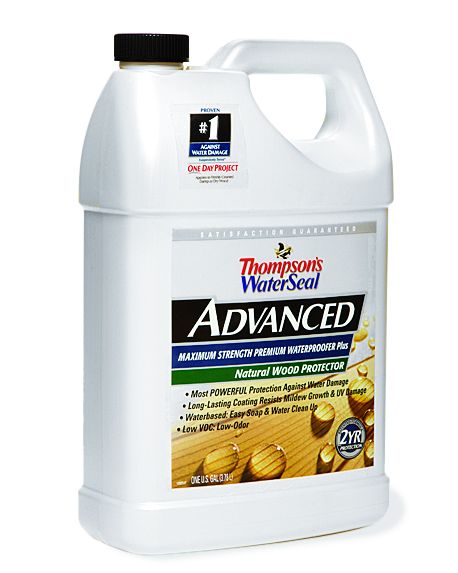
Waterproofers are penetrating liquids that seal wood to prevent shrinking, cracking, and rotting. While they offer minimal protection against graying, they come in two forms:
- Beading waterproofers: These contain wax or silicone to make water bead up on the surface. They typically need reapplication every few months.
- Sheeting waterproofers: These allow water to spread out in sheets, promoting faster drying. They can last for a few years but don’t provide a clear indicator of when reapplication is needed.
When choosing a waterproofer, consider the level of protection you want and how frequently you’re willing to reapply the product. Different formulations cater to different needs.
Eco-Safe Stains
Environmentally friendly stains are becoming increasingly popular due to their low volatile organic compound (VOC) content. These “green” stains typically contain less than 100 grams of VOCs per liter and rely on waterborne resins and pigments.
Key characteristics of eco-safe stains include the following:
- Faster drying time compared to traditional oil-based stains, which makes them more convenient for application and reduces downtime for your project
- Slower penetration, requiring careful application to avoid overapplication
- Potential need for additional mildewcide in humid climates
When using eco-safe stains, pay close attention to application techniques to ensure even coverage and optimal performance.
Shown: Messmer’s low-VOC penetrating oil works on dense exotic hardwoods; messmers.com. Vermont Natural Coatings is made with nontoxic ingredients, such as milk whey; vermontnaturalcoatings.com. BioShield contains no VOCs or toxic chemicals. Comes in 17 colors. SafeCoat offers wood-tone colors with low odor; afmsafecoat.com
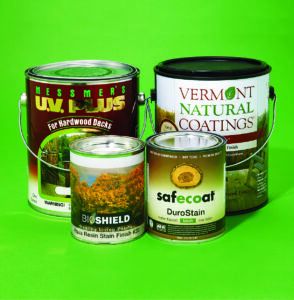
Stains in Color
Semitransparent and solid-color stains come in several hues, giving your home a painted look that’s a cinch to maintain. Follow along for a gallery of vibrantly stained, curb-appeal-boosting clapboards, shingles, and trim.
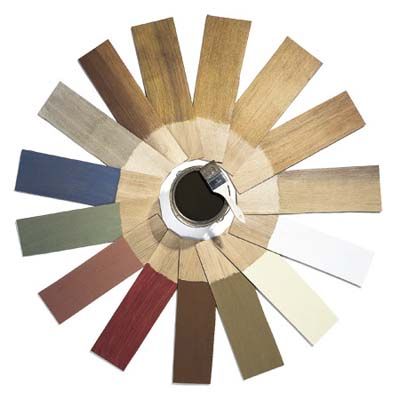
Hunter Green
From a distance, this Craftsman-influenced house looks painted, but closer inspection reveals a penetrating semitransparent stain on its cedar clapboards. This type of stain allows the wood’s natural texture to show through while providing excellent protection against the elements. It’s an ideal choice for those wanting a subtle yet striking appearance.
Shown: Clapboard stain, similar to shown, Flood TWF-Semi in Blue Shale; flood.com
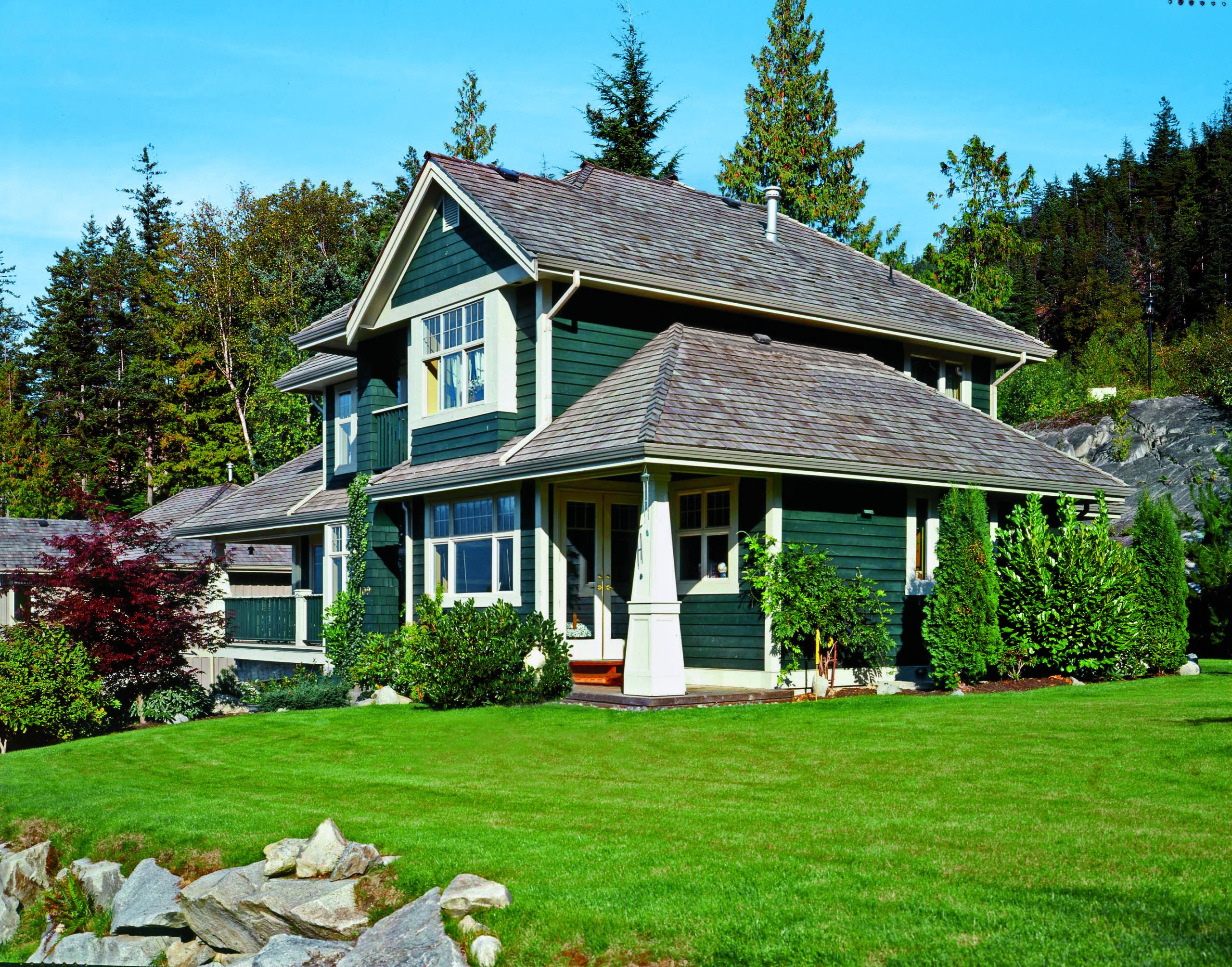
Rich Red
Bold, solid-color stains can accentuate your home’s architectural features. A vibrant red trim, for example, can highlight windows and rooflines, adding visual interest and depth to your home’s exterior.
Shown: Sherwin-Williams’s WoodScapes Solid-Color Stain in Cape Cod Red on trim, and DeckScapes Waterborne Semi-Transparent Stain in Cider Mill on decking and siding; sherwin-williams.com
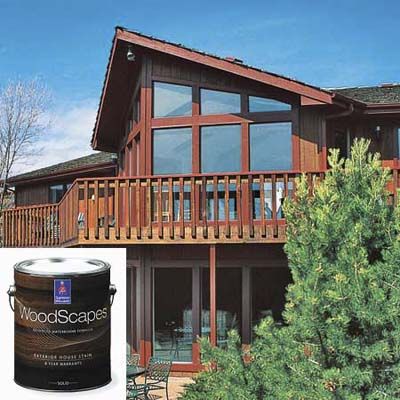
Gray Moss
Solid-color stains in muted tones like gray can mimic the appearance of traditional flat, oil-based paints while offering better moisture resistance and durability. This option is perfect for achieving a classic, colonial look with modern protection. It gives your home a timeless look that harmonizes well with various architectural styles.
Shown: The clapboards on this Colonial Revival–style house are finished with Cabot Pro V.T. Solid Acrylic Stain in Gray Moss; the trim is Ultra White
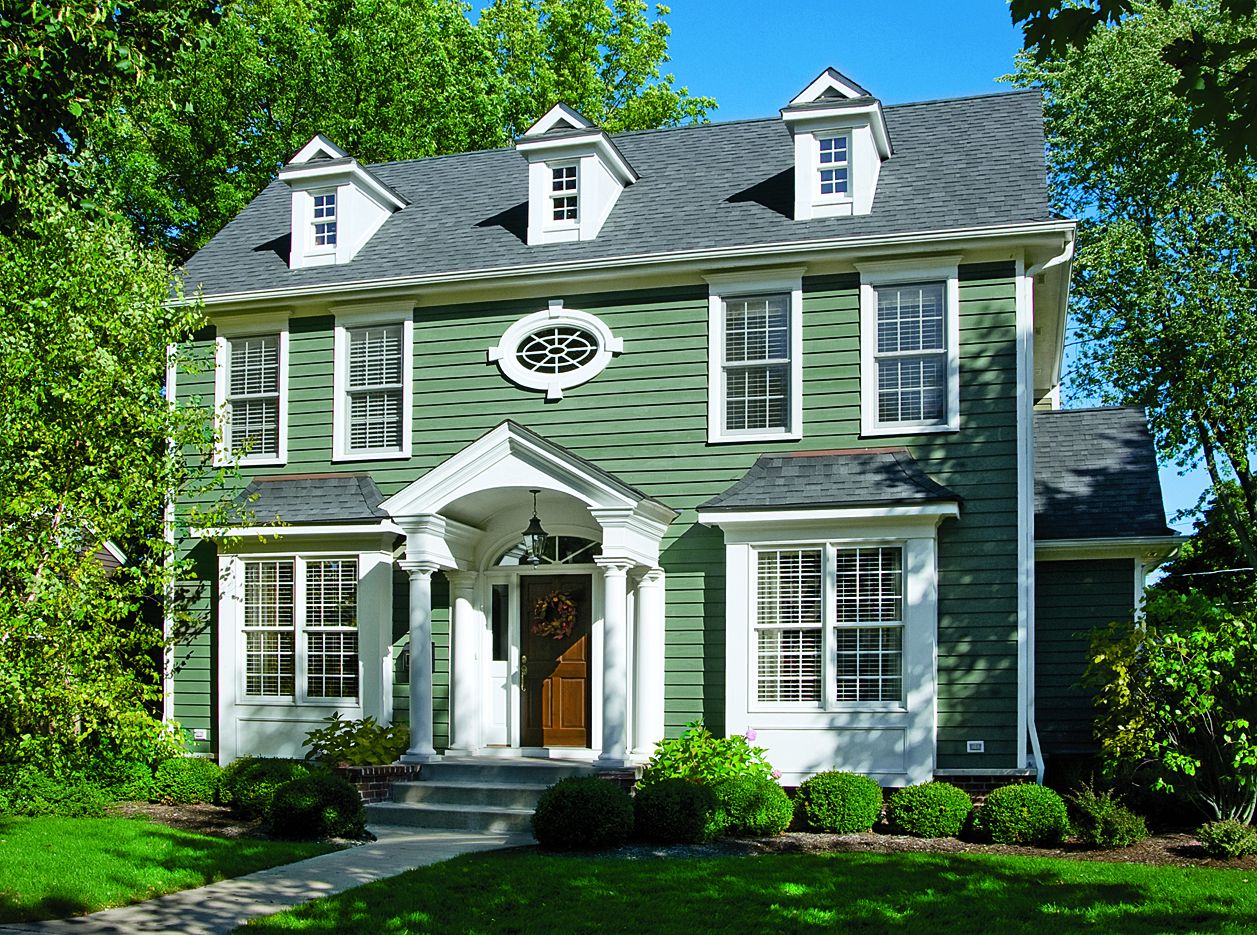
Dusky Blue
Having two types of siding offers an opportunity to use two different stains. Here, the shingles show off their russet hue under a clear toner, while the boards and battens get a low-maintenance solid-color stain.
Shown: Olympic Maximum Waterproofing Sealant in Cedar Naturaltone on shingles, and Maximum Solid Color acrylic stain in Wedgwood on the vertical boards; olympic.com
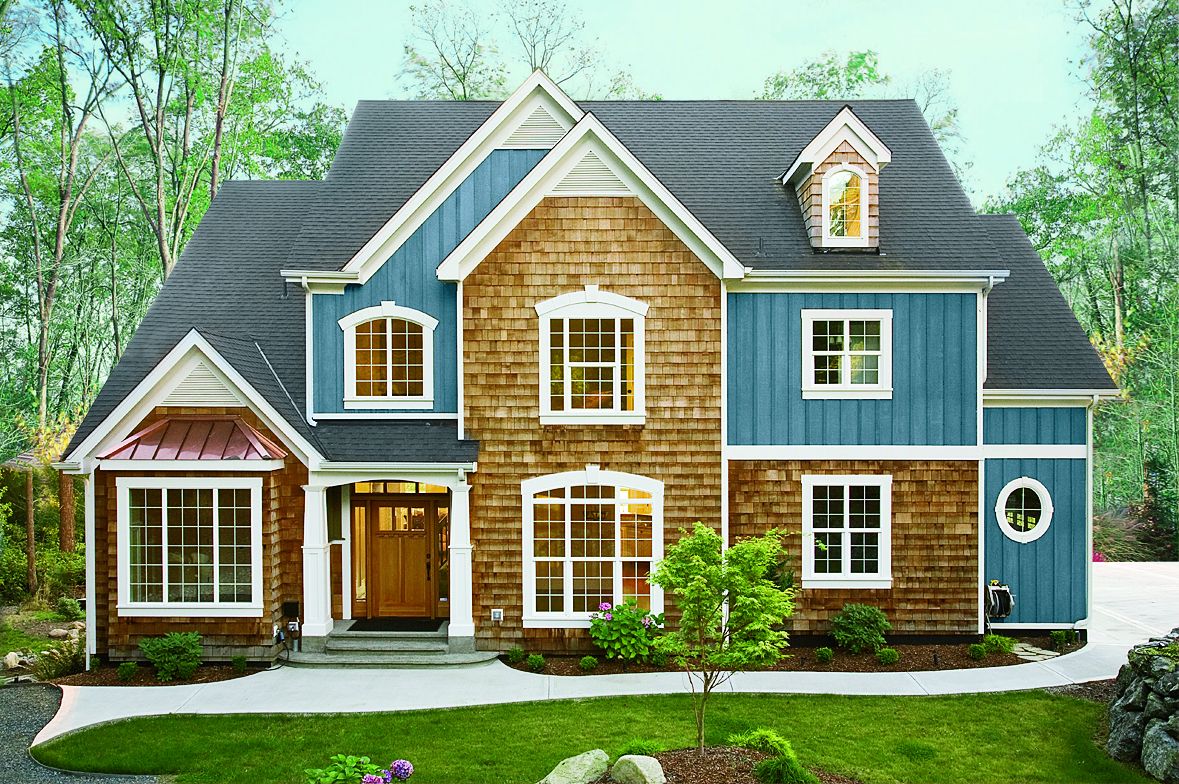
Get Gray Without Decay
For those who love the weathered look of driftwood but want to avoid decay, specialized stains can accelerate the graying process while protecting the wood. These products typically contain a bleaching agent and light pigments to achieve the desired effect. They offer the charm of aged wood without the associated deterioration.
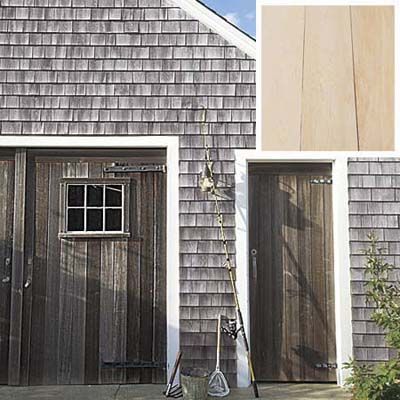
Staining Composite Boards
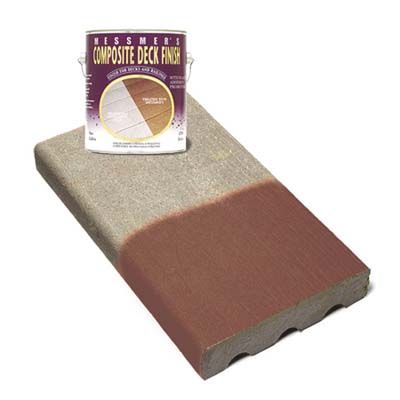
Composite decking materials, while more resistant to weathering than solid wood, can still benefit from staining. Specialized semitransparent stains for composites can restore or change the color of weathered decking and last one to two years. Alternatively, solid-color acrylic deck finishes can provide three to five years of protection on composite surfaces. Choosing the right product can refresh and extend the lifespan of your composite decking.
Shown: Messmer’s Composite Deck Finish in Navajo Red; amazon.com
Going for Shine
For a luster worthy of a fine yacht, choose a translucent film-forming finish. Spar varnish is the traditional choice for this effect, but it’s a bear to apply and maintain. Sikkens’s two-coat Cetol Dek Finish (sikkens.com) offers the same look but with a film that’s more breathable and flexible, and it has more sun-blocking pigments than a varnish. Brushing on a refresher coat is easier, too. Just wash it and apply the new finish when it dries.
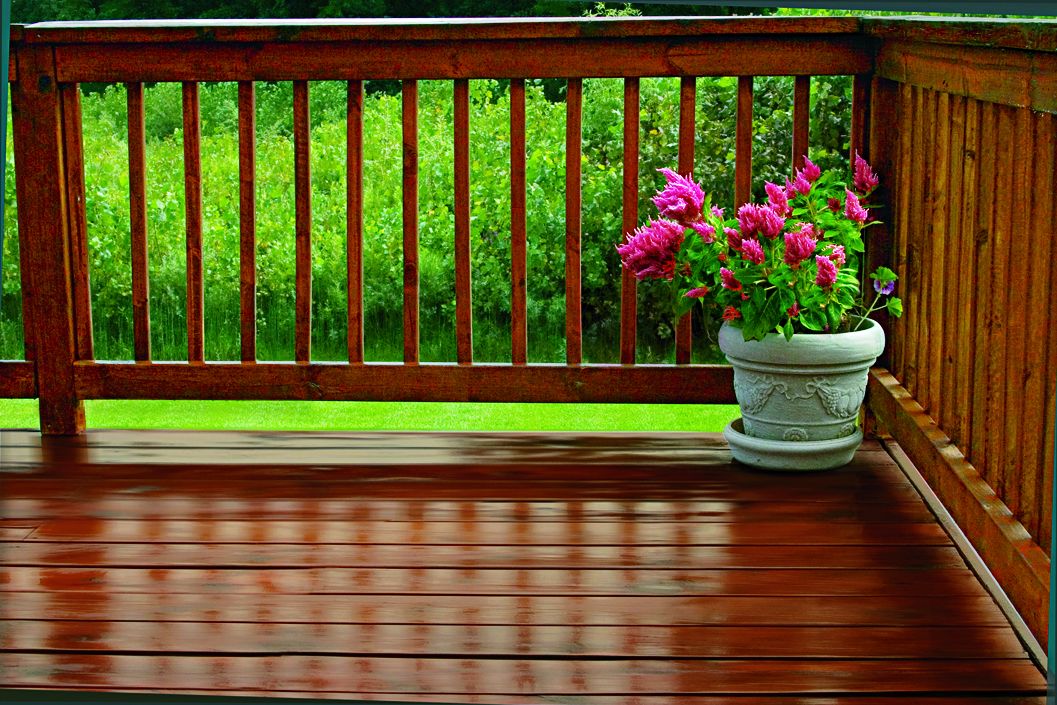
Maintaining Stain
As with any coating, longevity depends on good preparation and application. Follow these professional tips for the best results:
- Address issues promptly: If you notice bare spots or fading, take action immediately to prevent further damage. Proactive maintenance saves time and effort in the long run.
- Clean thoroughly: Use a suitable cleaner and scrub the surface to remove dirt and debris before applying a new stain. Clean surfaces lead to better adhesion and a more polished finish.
- Sand when necessary: For weathered surfaces, light sanding can help prepare the wood for better stain absorption, as it removes imperfections and promotes even staining.
- Apply carefully: Use high-quality brushes and work in manageable sections.
- Clean up properly: Dispose of stain-soaked rags safely to prevent spontaneous combustion.
Common Staining Problems
Even with proper application and maintenance, staining issues can arise. Here are some common problems and their solutions:
Mildewing
Mix a solution of diluted bleach, water, and TSP substitute to clean affected areas. Rinse thoroughly before the solution dries.
Peeling
This occurs only with film-forming finishes like solid-color stains. To fix, remove the peeling stain and start over with proper surface preparation. Promptly addressing peeling can prevent further damage.
Fading
A natural result of sun exposure and foot traffic, fading indicates it’s time for a new coat of stain. Consider using a stain with more pigment for longer-lasting color. Regular reapplication keeps your wood looking fresh and protected.

Where to Use Stain
Exterior stains can be used on several areas outside the home.
Doors and Trim
Exterior stains are excellent for enhancing the natural beauty of wooden doors and trim. Clear toners can highlight distinctive grains, such as the knots in rustic alder, while providing essential UV protection. When selecting a stain for doors and trim, consider the wood type and desired level of grain visibility. Thoughtful choices can enhance your home’s entryway and overall curb appeal.
Shown: Ultra Premium Penofin Penetrating Oil in Transparent Chestnut, similar to shown; penofin.com
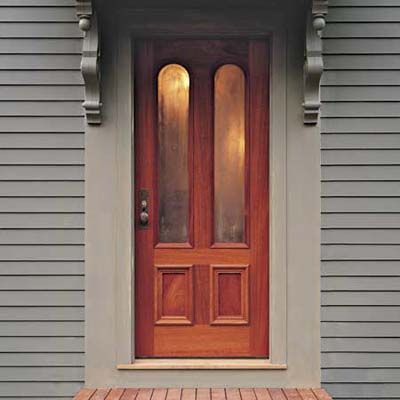
Furniture
Outdoor furniture benefits greatly from exterior stains, even when made from naturally resistant woods like cedar. Stains help repel water and prevent weathering, extending the life of your outdoor pieces. For easier application on intricate furniture designs, consider using a spray-on stain.
Shown: Krylon Semi-Transparent Wood Stain; krylon.com
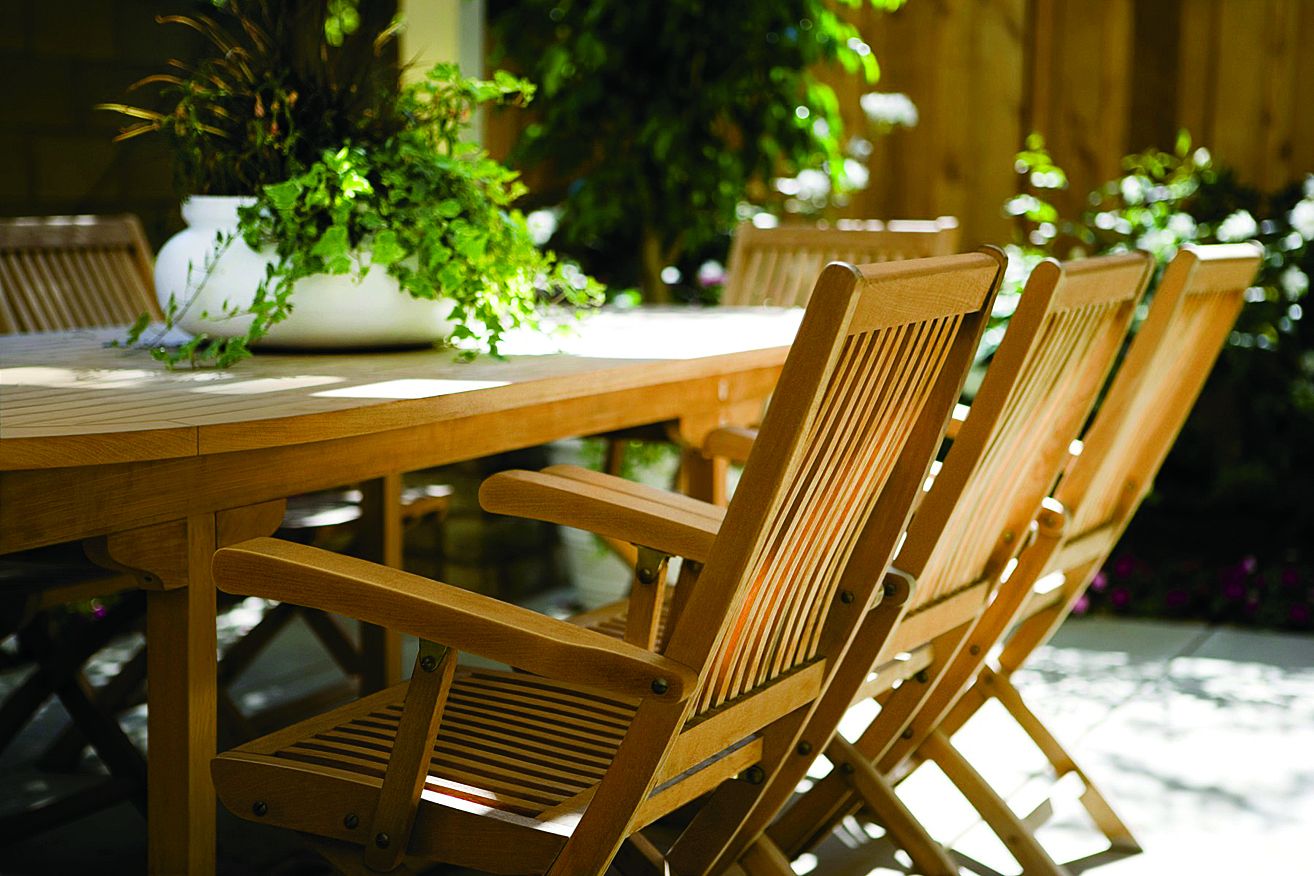
Decks
Clear toner is great for new, high-end redwood or cedar decking, but on weatherbeaten or inexpensive decking, like this pressure-treated pine, semitransparent stain is the ticket to an upscale look.
Shown: Flood TWF-Semi in Dusty Trail; flood.com
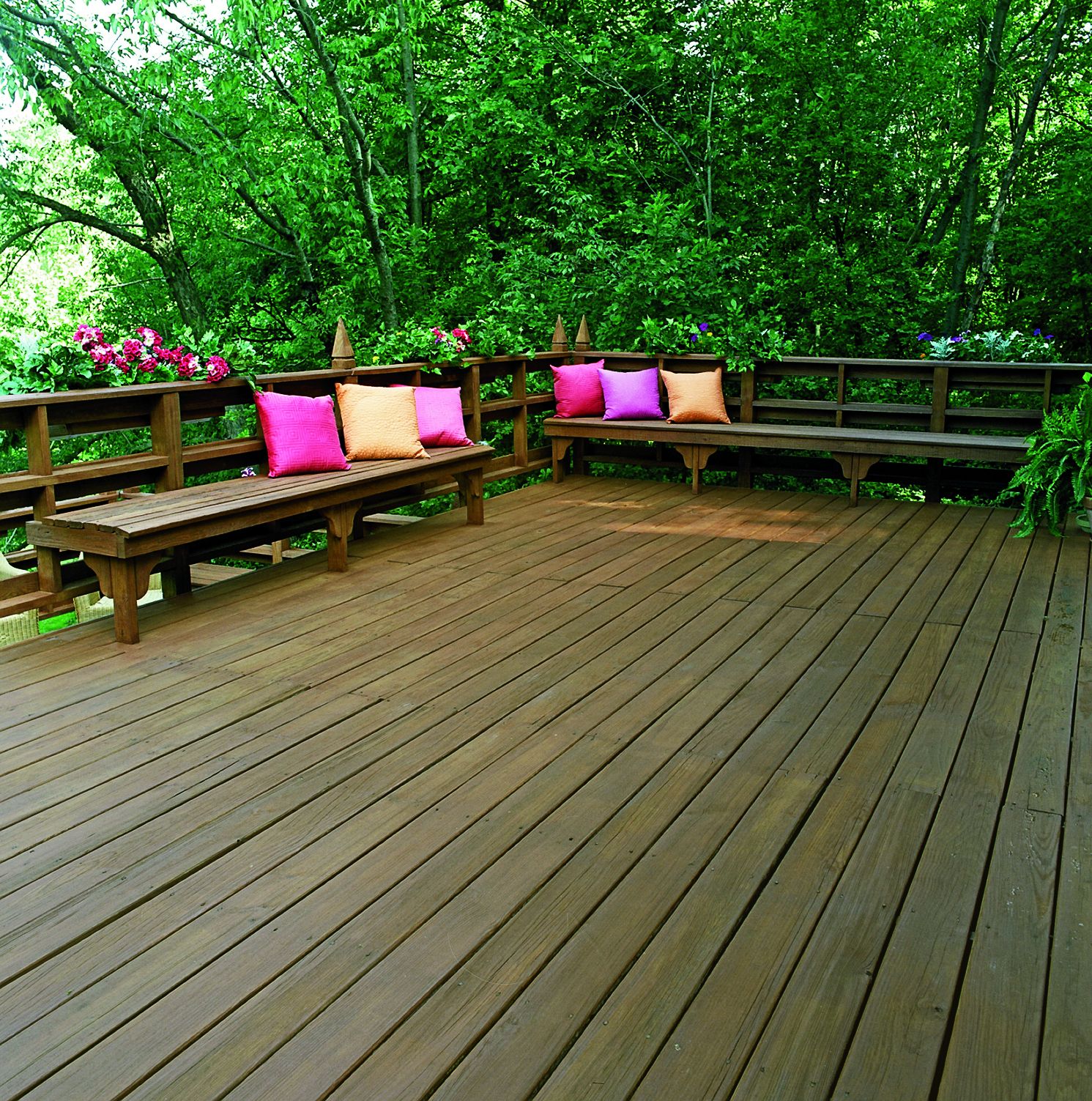
Siding
Most stains made for decking can also be used on siding. Plus, it’ll last longer than the same finish on a deck because vertical surfaces take less of a beating. Solid-color stains on clapboards can provide a painted look with easier maintenance, while semitransparent options allow the wood’s natural character to show through.
Shown: On clapboards, Arborcoat solid-color stain in Barn Red; benjaminmoore.com
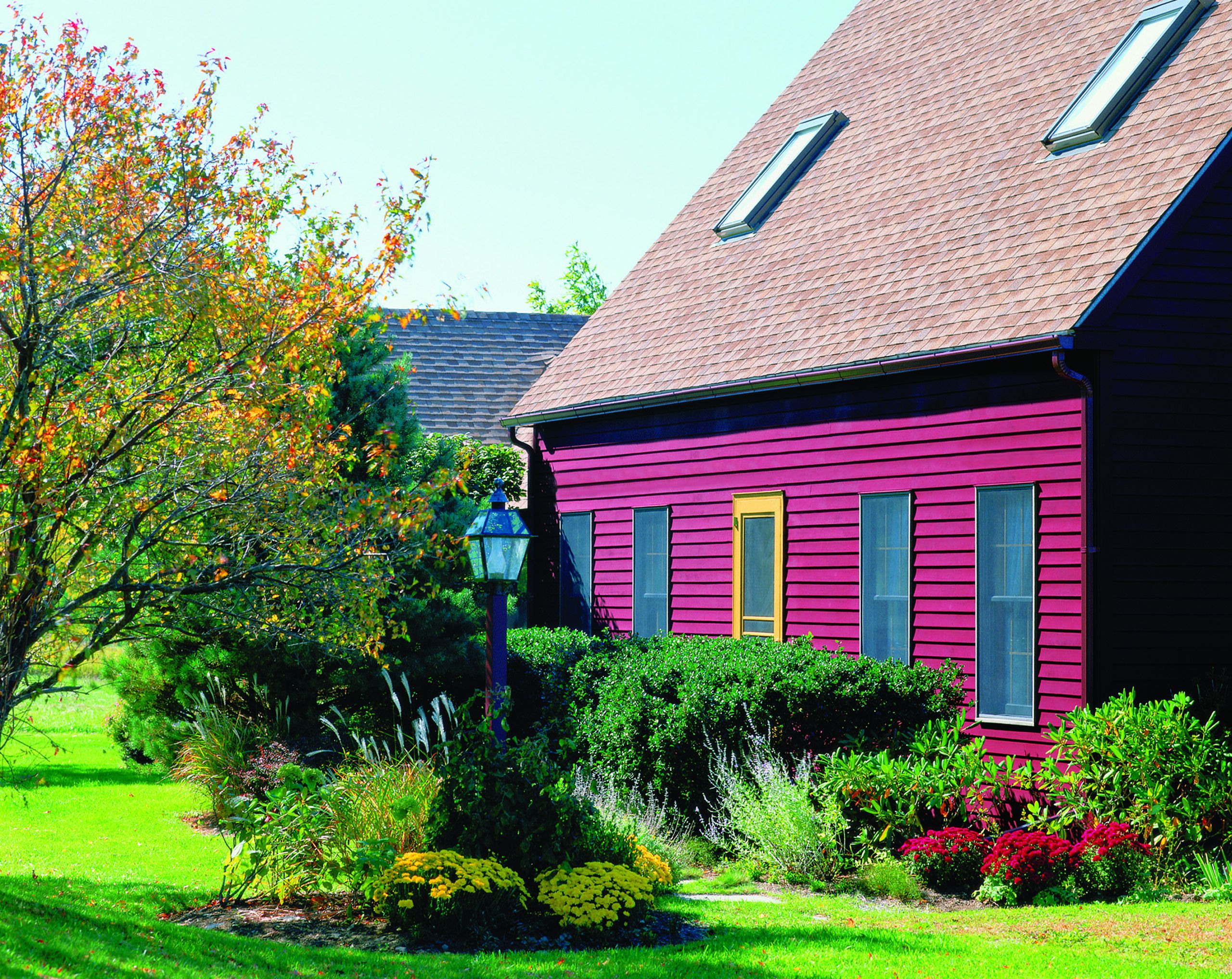
Fences
Semitransparent stains emphasize a fence’s design, while clear toners show off its wood grain. Apply either type with a pump sprayer, which is the ideal tool for coating the long runs and numerous nooks and crannies of a fence.
Shown: Wolman DuraStain Semi-Transparent in Chestnut Brown
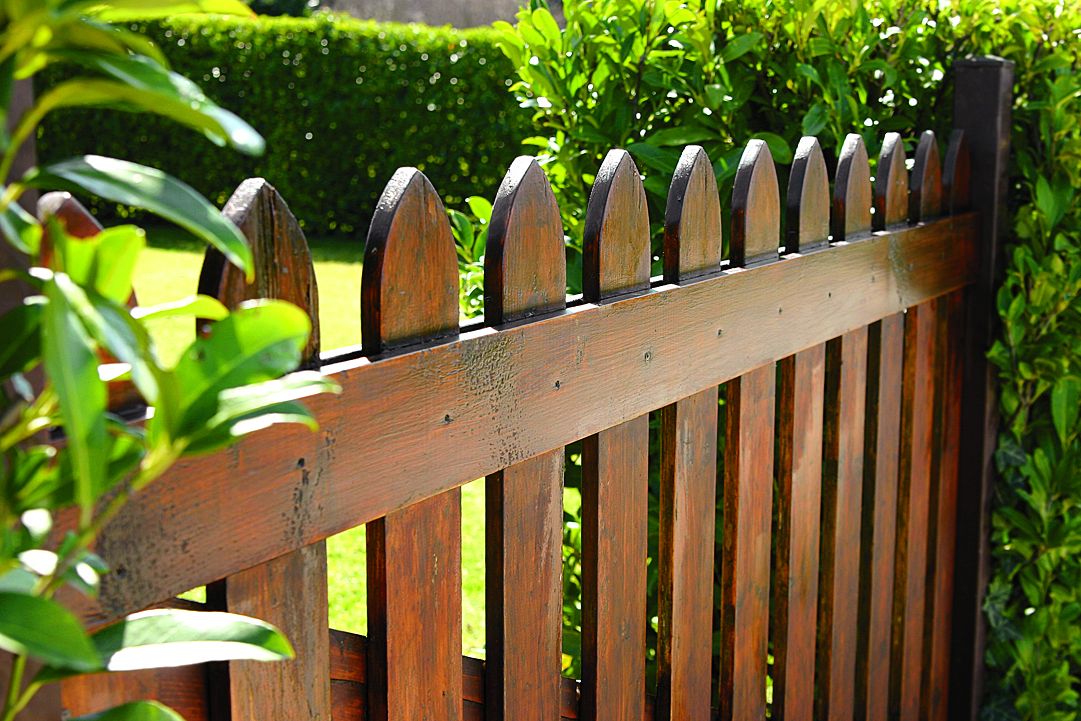
Our Conclusion
Exterior stains protect and beautify several outdoor wood surfaces, including decks, siding, and even furniture. By understanding the different types available and considering factors such as wood type, desired appearance, and level of protection needed, you can choose the perfect stain for your project.
